Mythical Mushrooms & Dark Magic Reishi Tuffles

It’s summer in Appalachia and there is endless rain. Some days it has poured from grey dawn to greyer twilight, the sound of it like trees harshly arguing. It’s become a rhythm: the rain, the rain. Last week, it reached a pitch. The soil was saturated; every step raised small lakes of footprints. Low fields became like shallow ponds, their basins filling with mud from the river and the tiny eggs of tadpoles. Up north, whole bridges washed away. Times like these I wonder if the earth itself doesn’t experience that same sharp catharsis we call crying. The moment when something inside finally tears, and there is nothing to do but allow the fresh gift of deep weeping.
Rain is a part of these mountains, as ancient as the softened curves of its stones. It is a harbinger—sometimes soft, sometimes thunderous— of the dying and the born. Old trees topple with sodden roots to the forest floor. The waterfalls carry boughs away. Plants grow heavy, yet ravenous. Moss and mold cover all unmoving things. Deeper still, in the rotted logs of the woods, death is transformed, stunningly and sudden, into life. This is the time for mushrooms.

Mushrooms have always held a great and murky magic in my mind. They are mysterious. Neither plant, nor animal, nor mineral, mushrooms occupy a space of being that is hard to communicate…let alone conceive. Like us, mushrooms breathe. They take in the same oxygen we so unconsciously praise, and exhale the same spent carbon dioxide. Many people lump mushrooms in with the plant kingdom but mushrooms are actually as different from those chlorophyll-loving beings as we are from a blade of grass.
The shrooms that we see growing from soft logs and standing trees, are actually the wisely-timed blooms of a much larger, hidden network of vegetation called mycelium— colonies of branching beings that extend underneath the soil of our entire world.
Mycelium breaks down massive amounts of organic material, turning winters leaves into the rich humus of a forest floor. Without mycelium, life on our planet, and the great relief of dying, would be irrevocably altered. Mycelium is not only an organism (and some say the largest organism on earth) it also functions as a vast network of interaction. Some scientists believe that trees and other plants are able, not only to communicate, but also send vital nutrients to each other through the infinite strings of this mysterious web. Mycelium is so adept as breaking down organic compounds, many think they might be the first to adapt to the new chemicals of our world, transmuting radiation and pollutants into something more benign.

Mushrooms, often as ephemeral as an orchid in the rich cove of spring, are rare heralds in our world. They remind that we are all connected, in vast and unfathomable ways. That our lives, singular and unique, are but a single bloom enriching the whole. They lay bare the pungent, primal fact of existence: that the release of one form ignites another. From death and decay, the darkened sway of one life extinguished, new life arises and is born. They show, exquisitely, how all are really one in the same. Here in Appalachia, the birth story of reishi begins with the death of the Eastern Hemlock.
Our abundant local species of reishi is Ganoderma tsugae, named for the scientific genus of the tree on which they flourish. Eastern hemlocks (Tsugae candensis) used to dominate large swaths of southern Appalachia. Today, almost all of these great hemlocks are falling. The wooly adelgid, an invasive East Asian insect, has single-handedly brought down an entire population. As the hemlocks falls, the reishis boom.
In these mountains, reishi is sought after, searched for and prized like gold. Every season I try to dry enough to get me through the long winter. I like to decoct reishi for an everyday immune tonic tea, and add it liberally to my soup stocks and broths. For many people, finding a good patch of reishi in the woods is tantamount to being blessed inexplicably by a fabulous, life-affirming dream. You feel unshakably on the right path.

The Asian species of Reishi (Ganoderma lucidum) is called “Ling zhi,” which translates as “spirit plant” or the “immortality mushroom.” In traditional Chinese medicine, this rare wild mushroom was reserved for the emperor and his court. Reishi was cherished for its ability to nourish the heart and safeguard shen (the Chinese word for the concept of a person’s mind/consciousness and emotional balance). Chinese reishi is considered an adaptogen, cardiotonic, immunomodulator and gentle nervine tonic.
There has recently been a crisis of confidence in the world of Southeastern herbal medicine. Some herbalists in the region have become so convinced that our local species of mushroom is inferior to the imperial G. lucidum as to declare it useless. To that, I say, “phooey!” I live in Appalachia and I believe, fixedly and with all my heart, that the medicine you need is always growing around (and within) you. When I collect our local reishi, I feel its medicine radiate through the very air we both breath. The experience is sensory, incandescence, pungent with a humid and fragrant fate. I believe in the medicine of this reishi.

Recently I went for a solo hike at a beautiful high elevation trail. I was hoping to skip between the breaking bouts of torrential rains to find a hint of this illustrious mushroom. I hiked down the slippery mud-laden path through the fog to a spot rumored to be rich with early summer buds. Finally, after two hours, I dropped down into a forest of old hemlocks, and slowed my pace. For a while, I only spotted last year’s reishi, far off the trail and up high on the dead standing trees. I passed several streams, swollen with water. I saw no one. And then, in the soft distance, I heard the rush of a much madder flow. A waterfall, or a new river, pushed from the stones by our recent deluges of rain. As the sound grew, and I neared closer…I suddenly knew: in the middle of the torrent there would be a soaked log laden with reishi. Without question, without expectation, without pomp, I opened into the white water clearing, and there it was. If you listen long and hard enough, you can always hear medicine speaking.
I couldn’t help it. I threw caution to the wind (and my shoes in a nearby tangle of roots) and climbed up onto the precariously perched log. It was slippery, bogged with water and furred with moss. The fresh sweet buds of reishi and the illustrious varnish of their mature orange fans cascaded down its long body. I angled myself with my camera, careful not to let an elbow slip lest I tumbled myself into the falling mass of white water. Underneath me the wood radiated the fragrant, mineral breath of loose earth. I lingered for a long time, exploring life at the edge of such a deluge, listening. When the reishi gave its soft nod, I harvested. I cut a few creamy nibs off the fleshy buds, to be slow cooked later in warm butter and a cast iron pan, and took precisely four mushroom blooms. On the hike back the sky grew ponderous, unhinged and finally poured. I sloughed through the rain in a wide poncho, singing to myself as I climbed the trail, already dreaming of the enchanted reishi concoctions to come…

Dark Magic Reishi Maple Truffles
I crafted these bittersweet delights on a dangerously stormy afternoon. The soft music of the kitchen was swallowed by the drum of the rain and the thunder shook the whole house. Lightening drew close and gave an electric spark of energy to these dark magic creations.
This recipe is a decadent way to incorporate reishi medicine into your life. The combination of the cacao with a luscious dash of dark maple syrup, makes for some seriously addictive incantations. Night owls be warned. These chocolates have kept me up into the wee hours of the morning. On their own, neither reishi nor cacao have ever been able to keep me from sleep, but there is something in the synergy of these truffles that had me (and my roommate) twiddling our thumbs and daydreaming until dawn. Eat one before a rich evening of conversation, live music by firelight, or studying in your library.
Ingredients:
1 cup dried chopped Reishi (if you are using powder I would reduce the amount to ¼ cup)
3 cups Water
1/3 cup Maple Syrup (depending on your sweet tooth)
1/3 cup Cacao butter (melted) – you can also substitute coconut oil
1 cup Pecans ground (or nut of choice)
½ cup Coconut flakes
½ cup Cacao powder
Optional: Maca powder, to taste
[Makes approximately 20 heaping teaspoon-sized truffles)
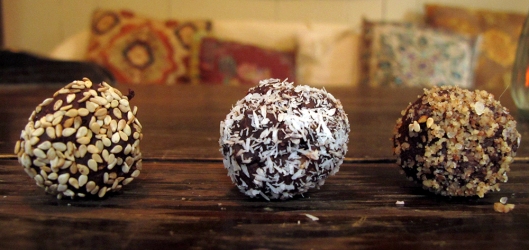
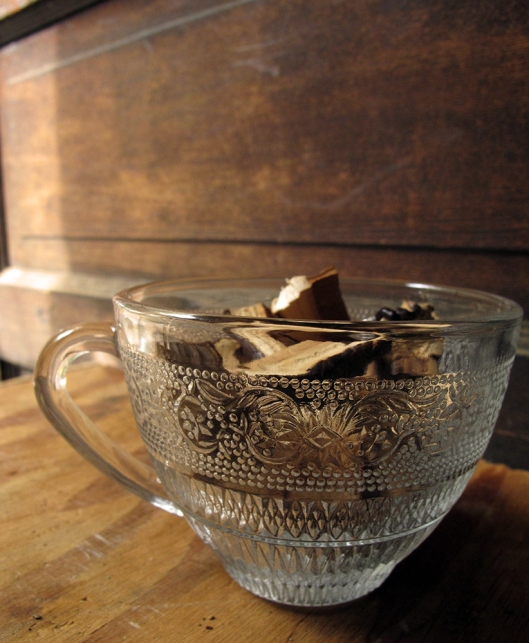
Directions:
The medicinal constituents of reishi are most soluble in water. To encapsulate the medicine of these mushrooms, this recipe involves the finesse of creating a truly delicious bitter syrup. To start, combine your dried reishi and water in a medium saucepan. Bring to a boil and cover. Simmer until the water content is reduced to 1/3 cup (The water line will be just covering the reishi. You can press the decocted reishi through a cheesecloth or potato masher to get out every last drop of bitter mushroom goodness. Save the spent reishi in the fridge and add to your next tea for a gentle taste of mushroom).
Pour your concentrated reishi decoction back into your empty saucepan and combine with maple syrup. Gently heat (uncovered) until you have reduced your syrup in half.
Pour your reduced reishi syrup into a separate bowl. Taste to determine strength (Ideally you would have a perfect balance between reishi’s bitter medicinal and the mellow sweetness of the maple). Reserve a spoonful of syrup to drizzle over the finished truffles if you so desire.
Melt cacao butter over low heat and then combine with your reishi syrup to make a small pot of pure manna.
In a separate bowl combine ground pecans (or nuts of choice), coconut flakes and cacao powder until well mixed. (Add your optional maca or other super food powders)
Slowly pour the liquid cacao butter and reishi syrup into your combined dry mixture. Stir well. If it still feels runny, add an extra dash of coconut flakes or nuts. It should be warm, supple consistency.
Put your finished mixture in the fridge for at least an hour. Remove when it is solid enough to roll into teaspoon-sized balls. Finished your truffles with a variety of creative toppings. You could try toasted sesame seeds, candied ginger and cayenne, or ground pistachios and sea salt. Drizzle with your reserved reishi syrup and serve on any rainy day.


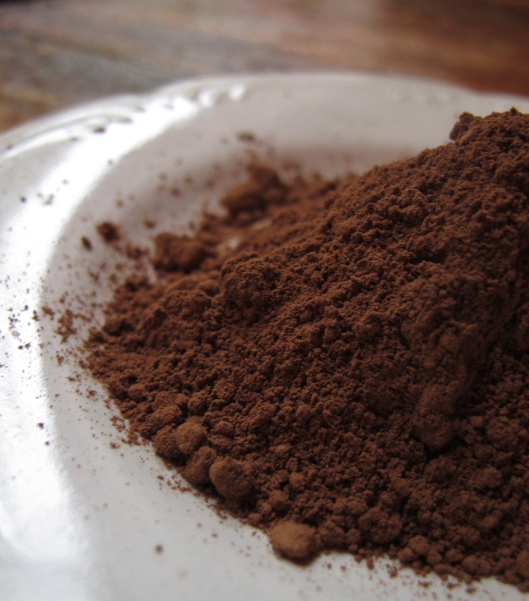

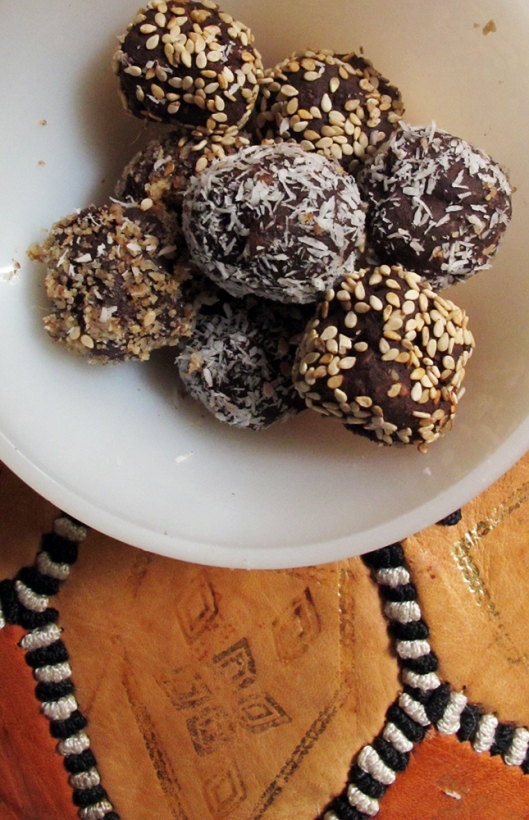


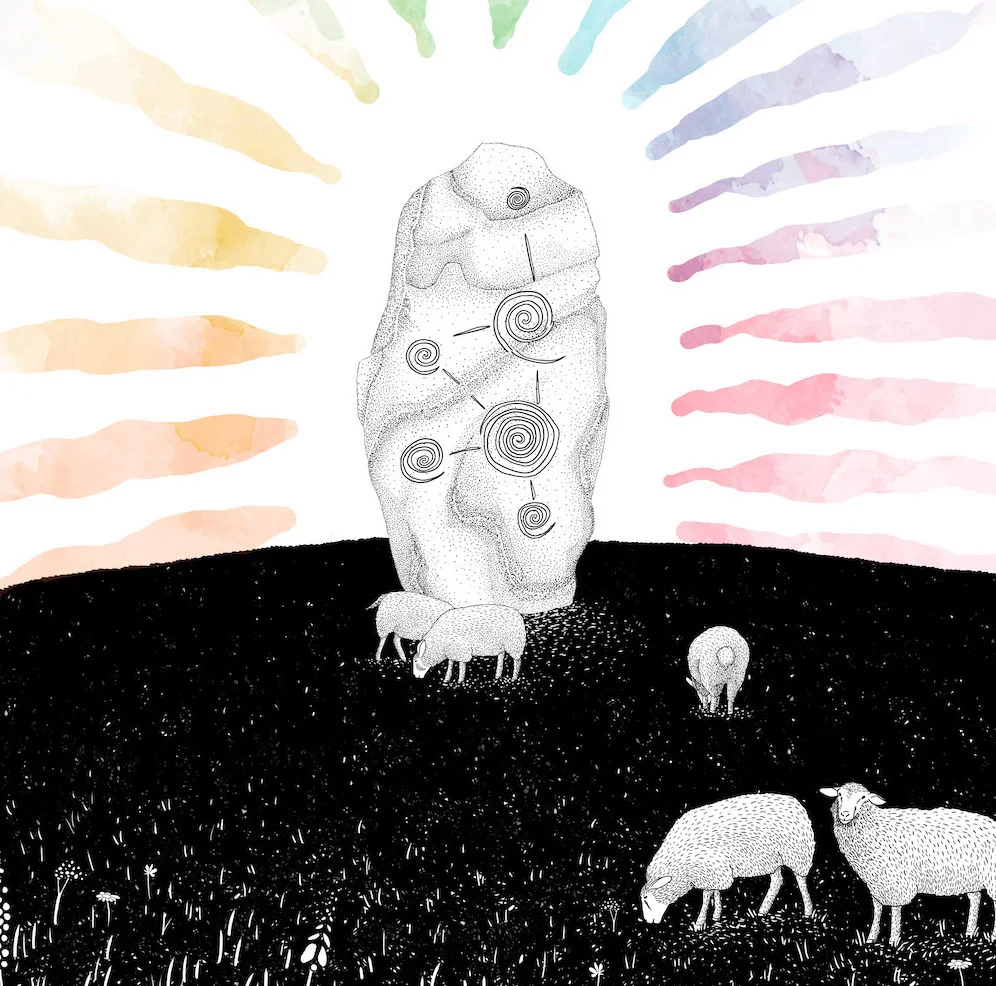
I have a question…Can you taste the mushroom in these truffles?
Hi Kayan – the mushroom taste is mild (if detectable at all!) Mostly it’s just chocolate-goodness.
Enchanting!